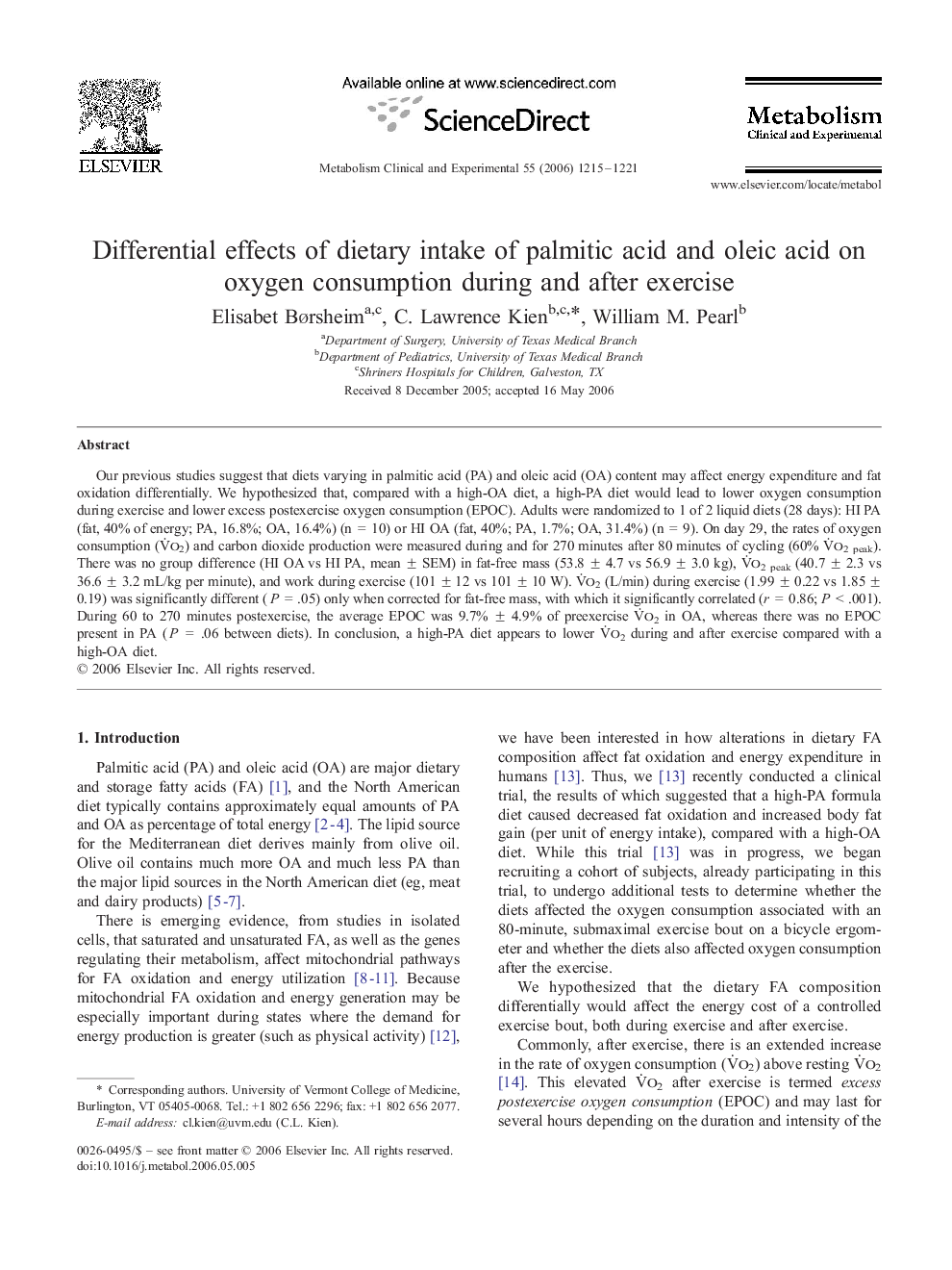| Article ID | Journal | Published Year | Pages | File Type |
|---|---|---|---|---|
| 2807627 | Metabolism | 2006 | 7 Pages |
Abstract
Our previous studies suggest that diets varying in palmitic acid (PA) and oleic acid (OA) content may affect energy expenditure and fat oxidation differentially. We hypothesized that, compared with a high-OA diet, a high-PA diet would lead to lower oxygen consumption during exercise and lower excess postexercise oxygen consumption (EPOC). Adults were randomized to 1 of 2 liquid diets (28 days): HI PA (fat, 40% of energy; PA, 16.8%; OA, 16.4%) (n = 10) or HI OA (fat, 40%; PA, 1.7%; OA, 31.4%) (n = 9). On day 29, the rates of oxygen consumption (VËo2) and carbon dioxide production were measured during and for 270 minutes after 80 minutes of cycling (60% VËo2 peak). There was no group difference (HI OA vs HI PA, mean ± SEM) in fat-free mass (53.8 ± 4.7 vs 56.9 ± 3.0 kg), VËo2 peak (40.7 ± 2.3 vs 36.6 ± 3.2 mL/kg per minute), and work during exercise (101 ± 12 vs 101 ± 10 W). VËo2 (L/min) during exercise (1.99 ± 0.22 vs 1.85 ± 0.19) was significantly different (P = .05) only when corrected for fat-free mass, with which it significantly correlated (r = 0.86; P < .001). During 60 to 270 minutes postexercise, the average EPOC was 9.7% ± 4.9% of preexercise VËo2 in OA, whereas there was no EPOC present in PA (P = .06 between diets). In conclusion, a high-PA diet appears to lower VËo2 during and after exercise compared with a high-OA diet.
Related Topics
Life Sciences
Biochemistry, Genetics and Molecular Biology
Endocrinology
Authors
Elisabet Børsheim, C. Lawrence Kien, William M. Pearl,
